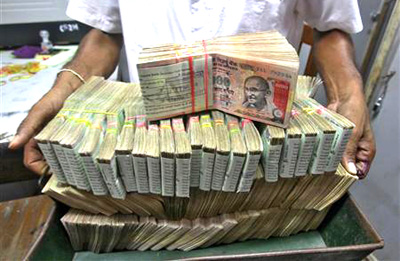
India ups rates to tame inflation
Mumbai, September 21, 2013
Reserve Bank of India governor Raghuram Rajan surprised markets in his maiden policy review yesterday by raising interest rates to ward off rising inflation, while scaling back some of the emergency measures recently put in place to support the ailing rupee.
Rajan, who took office early this month amid India's worst economic crisis since 1991, increased the RBI's policy repo rate by 25 basis points (bps) to 7.50 per cent, defying most forecasts that he would leave the rate on hold to bolster a sluggish economy.
As expected, the former IMF chief economist struck a hawkish tone on price pressures in Asia's third-largest economy.
He was noncommittal about the direction of the next policy rate move but said he intends to continue withdrawing liquidity tightening steps that had been implemented to stabilise the currency as market conditions allow.
While raising the traditional policy rate, Rajan freed up market liquidity with a three-quarter point cut in an overnight borrowing rate that the central bank had temporarily raised by 200 bps in July to support the rupee.
Several traders said they expected the rupee to soon to resume its recent recovery from a record low on August 28, propelled by the US Federal Reserve's decision not to begin tapering its stimulus, as well as the Indian rate increase.
Despite an economy that grew at just 4.4 per cent in the June quarter, its weakest in four years, Rajan opted to increase India's policy interest rate for the first time in nearly two years, following similar moves by Indonesia and Brazil, whose currencies have also been hit by heavy capital outflows in recent months.
In his first day on the job, Rajan unexpectedly outlined an action plan to revive the rupee and bolster financial markets and the banking system.
"What's clear now is that Rajan is very focused on containing inflation and the currency, and that means high interest rates until we see prices coming down and a greater fiscal discipline," said IDBI Federal Life Insurance chief investment officer Aneesh Srivastava.
The rupee fell as much as 20 per cent this year to a record low in late August as investors pulled money from emerging markets.
It has recovered some of those losses since Rajan took over at the RBI amid high expectations on September 4, gaining about 9 per cent through Thursday.
Rajan, who famously forecast the global financial crisis, said yesterday that domestic drivers of the rupee now take precedence: "The focus has turned to internal determinants of the value of the rupee, primarily the fiscal deficit and domestic inflation."
The RBI yesterday reduced the marginal standing facility (MSF) rate to 9.5 per cent, which makes borrowing cheaper for banks. Since mid-July, the MSF has been widely been viewed as India's effective policy rate.
Rajan said he wants the repo rate to resume its place as the operational policy rate as temporary rupee support measures are unwound, returning the gap between the repo rate and the MSF rate to its customary 100 basis points.-Reuters







